The Holocaust
Nazi Wehrmacht Photo Albums Reveal Forgotten Holocaust Images of Jewish Life and Suffering
Rare photos taken by German soldiers during World War II expose daily life, forced labor, and the destruction of Jewish communities
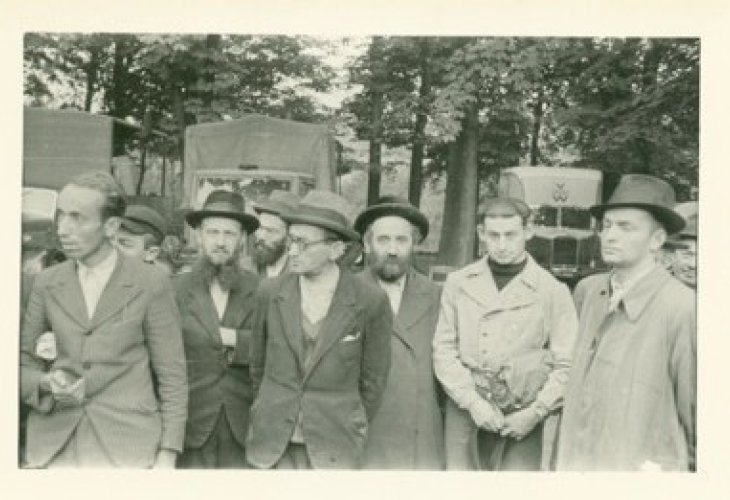 Forced labor in Krakow
Forced labor in KrakowAt first sight, these images look like nothing more than a sequence of ordinary photographs one might find in any old family album from the 1940s. Smiling children wave at the camera, unfamiliar streets in black and white appear, and forgotten villages are captured before fading into history.
Even the album’s owners sometimes appear, posing as tourists with broad smiles, or standing in groups beside old buildings. They seem like pictures you could find in any personal album of the time.
But the faded inscriptions on the back reveal the true dates and places — and the result is chilling.
One such photo: the funeral of a Jewish child, carried to burial by his family in 1941.
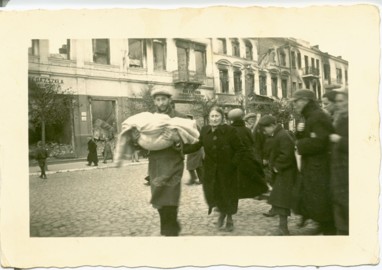 The funeral of a Jewish child - Unknown place, the child's family organized and took their son for burial. This picture is from 1941.
The funeral of a Jewish child - Unknown place, the child's family organized and took their son for burial. This picture is from 1941.Captured by Wehrmacht Soldiers
Decades after Nazi Wehrmacht soldiers casually documented their service during World War II, these photos have been made public, exposing the daily lives of Jews during the Holocaust.
Among the images:
Small children smiling innocently at soldiers.
Jews forced into labor.
Burning synagogues and destroyed homes.
Some photos include original captions written by the soldiers themselves. In other cases, researchers had to carefully investigate to understand what was being shown.
While some soldiers photographed the same people repeatedly over time — creating an unintentional record of their lives, others took just one image, freezing a fleeting encounter.
In some photos the Jews appear unafraid, while in others their faces clearly reveal fear, shame, and humiliation.
 Photograph from a car of Jews - The soldier sits in a vehicle passing through a Jewish village, curious and photographing the Jews passing by.
Photograph from a car of Jews - The soldier sits in a vehicle passing through a Jewish village, curious and photographing the Jews passing by.
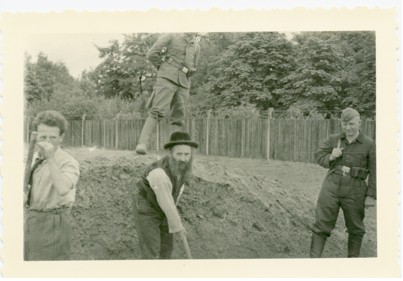 Forced labor in Krakow - The same people are seen with German soldiers supervising the forced labor.
Forced labor in Krakow - The same people are seen with German soldiers supervising the forced labor.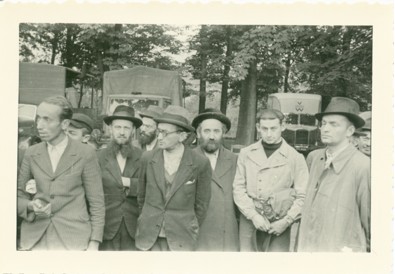
Rabbi Avraham Krieger, founder of the Shem Olam Institute dedicated to Holocaust remembrance, explains that their archives now hold thousands of such images, traced back to personal albums of Nazi Wehrmacht soldiers.
“Tourist Snapshots” of Horror
“About six years ago,” says Rabbi Krieger, “we began receiving photos from Wehrmacht albums documenting the period when the soldiers served. Unlike the SS, who were directly responsible for ghettos and deportations, Wehrmacht soldiers generally had no official contact with Jews. These photos, however disturbing, were taken with personal cameras — like tourist snapshots of their experiences during the war.”
One photo shows Jews through the windshield of a car, as a curious soldier snaps pictures from his seat. Another depicts Jews under strict supervision during forced labor in Krakow.
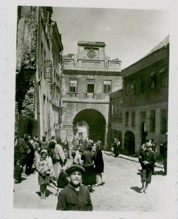 Ancient ghetto gate in Lublin - A photo taken in 1939-40 by a soldier capturing the ancient Jewish ghetto gate in Lublin.
Ancient ghetto gate in Lublin - A photo taken in 1939-40 by a soldier capturing the ancient Jewish ghetto gate in Lublin.
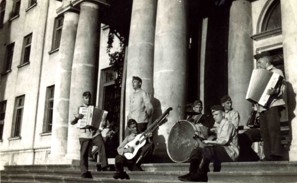 On the steps of the Lublin Yeshiva, a German soldier photographing a Gypsy music group playing for passersby outside the ghetto.
On the steps of the Lublin Yeshiva, a German soldier photographing a Gypsy music group playing for passersby outside the ghetto.
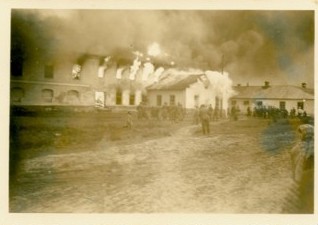 Burning of the synagogue in the Chassidic town of Kock - In a photo from 1941, the Jewish synagogue is seen engulfed in flames.
Burning of the synagogue in the Chassidic town of Kock - In a photo from 1941, the Jewish synagogue is seen engulfed in flames.Nazi Propaganda in Everyday Images
Some pictures appear staged. Soldiers deliberately sought out Jews who were stooped, disabled, or poor-looking, intended to “prove” Nazi racial theories.
On the backs of several photos are captions like:
“Finally, the Jews are working.”
“Jewish criminals.”
“Explosion of synagogues.”
And the most chilling of all: “Dead Jews.”
Other series of photos show synagogues first intact, then burning, and then reduced to rubble.
These albums draw the viewer into the eyes of the Nazi soldiers themselves, offering a horrifying glimpse into their perspective.
How the Photos Were Found
As part of its mission to study daily life, spirit, and faith during the Holocaust, the Shem Olam Institute created massive archives of photos and documents. Researchers in European countries began searching through both public and private collections for forgotten material.
Over time, descendants of German soldiers — often the third generation after the war, discovered these albums in family homes. They did not want to keep them, but could not bring themselves to destroy them either. Many quietly passed them on to researchers.
Sometimes only a handful of photos were delivered, and sometimes entire albums.
 Germans interacting with Jewish children, ordering them to salute with a Sieg Heil in the ghetto.
Germans interacting with Jewish children, ordering them to salute with a Sieg Heil in the ghetto.A Rare Glimpse Into Vanished Towns
Rabbi Krieger explains that the most striking aspect is that many of these images document small towns where no other photographs survived. “From big cities like Warsaw or Łódź, we have many photos, even ones taken by Jews themselves. But from these remote villages, these are often the only surviving records. In many cases, no one survived from those towns. These pictures are the sole memorial to their existence.”
One haunting photo shows German soldiers mocking Jewish children by forcing them to give the Nazi salute inside the ghetto.
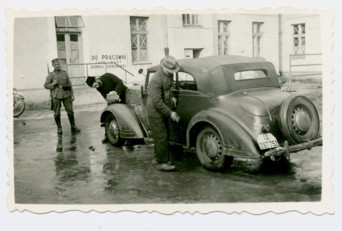 A recuperation facility for German soldiers - The Germans brought Jews to clean their vehicles and perform other service tasks (roles meant for the humiliation and suppression of Jews).
A recuperation facility for German soldiers - The Germans brought Jews to clean their vehicles and perform other service tasks (roles meant for the humiliation and suppression of Jews).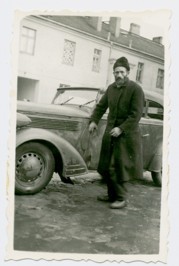
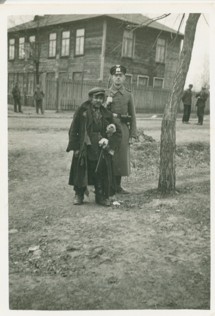 German soldier photographed with a Jew - Occasionally, German soldiers encountered Jews whose appearance matched Nazi propaganda. When encountering colorful characters, they quickly posed with them to show the Aryan race beside the inferior race.
German soldier photographed with a Jew - Occasionally, German soldiers encountered Jews whose appearance matched Nazi propaganda. When encountering colorful characters, they quickly posed with them to show the Aryan race beside the inferior race.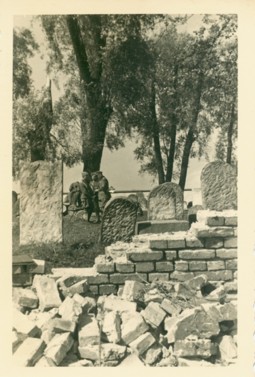 German soldiers vandalizing a cemetery in the Rzeszow area.
German soldiers vandalizing a cemetery in the Rzeszow area.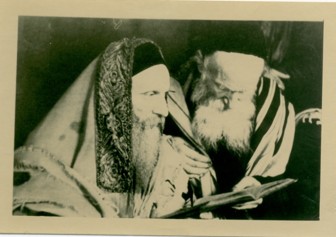 Picture from the Warsaw Ghetto - In such cases, we assume it's a staged photograph. It's likely the German soldiers found a synagogue and ordered the Jews to pose.
Picture from the Warsaw Ghetto - In such cases, we assume it's a staged photograph. It's likely the German soldiers found a synagogue and ordered the Jews to pose.The Mystery of the Faces
Despite the vast archive, most of the people in the photos remain unidentified.
Occasionally, Holocaust survivors have been able to recognize locations and shed light on the captured moments. However, for the overwhelming majority, their fate and identity remain lost in the shadows of history.

